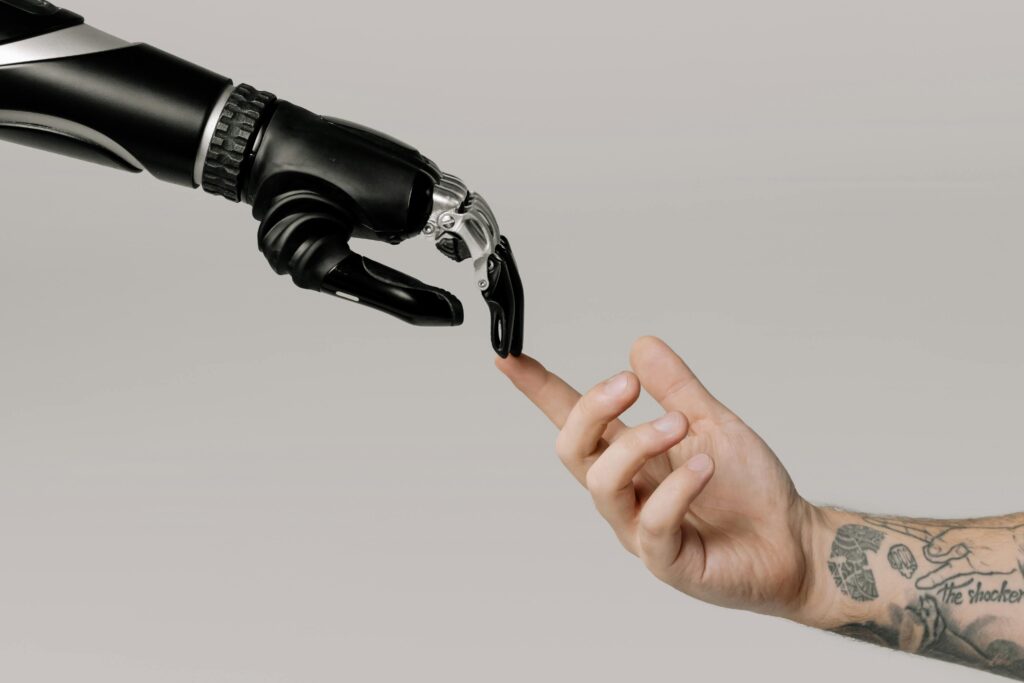How to Master Customer Experience in the Age of AI: Key Strategies for Success

Customer Experience: How has it evolved to CX 3.0?
Customer experience (CX) refers to the overall perception and satisfaction that customers have when interacting with a business or brand. It includes every touchpoint and interaction a customer has.
Basically, CX is how happy customers feel about a company or brand at every step of their journey. It’s all about how they feel when they use products, get help, or interact with the company in any way – from start to finish.
Now, businesses are ramping up efforts to boost customer experience by embracing AI. By the end of 2023, a whopping 78% of organizations aim to invest in AI for this purpose. AI’s strength lies in its ability to quickly analyze large amounts of data, allowing for personalized customer interactions. Tools like natural language processing (NLP) and large language models (LLMs) have made AI more accessible, opening up new possibilities for improving customer experiences across different industries.

How has CX evolved over the years?

CX 1.0: Centered around human employees
In Experience 1.0, which was based on physical interactions, human employees played a central role in assisting customers. This meant that customers relied heavily on the expertise and support provided by these employees throughout their journey.
However, despite the presence of human assistance, there were limitations in terms of control over interactions. For example, customers had to perform tasks manually, such as balancing checkbooks and waiting for stores to open, which could be time-consuming and sometimes inconvenient.
During this period, the value customers perceived from a company was largely based on how well human assistance compensated for the lack of control in physical interactions.
To differentiate themselves and provide added value to customers, companies primarily focused on enhancing human interaction across the entire customer journey.

CX 2.0: centered around digital interfaces
As the digital age emerged, companies became eager to harness the potential cost savings and operational efficiencies offered by digital interfaces.
Over two decades, there was a massive shift towards digital transformation, where every physical aspect of storefronts, workflows, and interactions was replicated in the digital realm.
This shift created a new standard for value. Now, customers judged how good a service was by how effectively a digital interface could compensate for the absence of human employees.
In the digital era, if a company wanted to stand out and offer unique value to customers, it had to prioritize improving the digital experience to enhance customer control.
This emphasis on digital experience led to a relentless focus on adding functionalities to support various tasks and needs while eliminating any sources of friction along the way.

CX 3.0: centered around AI partners
Now, a new paradigm has emerged.
Instead of customers being alone on their journey, left to navigate an app or interface solo, customers will be continuously supported by an AI partner.
In this era, perceived value will be defined by how much synthetic partnership is added to the digital experience.
In fact, you can see the new paradigm emerging through the basic functionality of today’s AI ‘companions,’ ‘agents,’ ‘co-pilots,’ ‘assistants,’ or ‘navigators’.

What exactly do customers want in the world of AI?
- Instant Gratification: Customers want things fast! Quick responses and speedy service. Businesses use AI and machine learning to power instant customer service chatbots, real-time order tracking, and faster delivery systems.
- Personalization: People love feeling special. Tailored experiences based on individual preferences. Advanced data analytics and AI technologies enable businesses to understand customer behaviors and needs, allowing for customized products, services, and communications.
- Seamless Multi-Channel Experiences: Ever start something online and finish it in the store? That’s what customers expect now – smooth experiences no matter where they shop. Cloud computing and omnichannel CRM systems facilitate seamless sharing of customer data, ensuring a fluid customer journey.
- Engagement and Connection: Users want to feel connected to their buying journey. Meaningful engagement and genuine connections with brands are crucial for building loyalty. Emerging technologies like VR and AR provide immersive brand experiences.
- Accessibility and Convenience: Services must be accessible to all, including those with disabilities. Technologies such as voice recognition, text-to-speech, and AI-driven accessibility tools make digital platforms more usable for everyone.
- Transparency and Trust: Trust is a big deal, especially online. Customers are increasingly concerned about privacy and ethical data use. Blockchain technology offers transparent and secure transactions and data storage, addressing these concerns. The implementation of clear opt-in options and data management options fosters customer trust.
What does Customer Experience 3.0 look like for our future?
Many companies feel tremendous pressure to join the AI ‘arms race’, so they’re shipping arbitrary functionality — rather than strategically planning for a new experience paradigm.
How can businesses approach CX 3.0?
- Define a 3.0 Strategy: Identify key customer pain points and opportunities for AI integration.
- Illustrate a Vision: Paint a vivid picture of the future CX, emphasizing AI-powered partnerships.
- Develop a Roadmap: Sequence the implementation path, focusing on incremental enhancements.
- Blueprint MVP Features: Design feasible AI solutions, prioritizing customer success and iterative development.
Brands using AI to enhance CX
- Spotify
Spotify ensures that all of its users can start their mornings with multiple unique playlists based on their recent listening habits. The platform’s powerful AI customer experience software creates a personalized playlist for each use. Known as “Discover Weekly,” this fan-favorite feature also helps new and emerging artists gain traction on the platform, as it will suggest recently released songs from artists in genres that users seem to prefer.
At the end of each year, Spotify Wrapped features a rundown of the subscriber’s most streamed podcasts, genres, and tracks. The platform typically makes this list available for about one month and encourages users to share their year-end listening statistics with others.
Spotify supports its AI customer experience technology by making it fun for users to share data. Customers see an immediate benefit to sharing information with the platform, as doing so allows Spotify to create curated experiences.
- Starbucks
The Starbucks app and associated reward system are shining examples of AI-augmented customer experience. When customers use the Starbucks app to place their orders, the AI tools silently work in the background to suggest product pairings based on the user’s past purchasing history and other factors.
By delivering personalized suggestions, Starbucks uses its AI platform to enhance the customer journey in a way that benefits consumers. At the same time, these product pairing suggestions boost average order value (AOV), which helps the global brand maximize revenue.
- Airbnb
While Airbnb allows users to search for lodging in specific regions, the platform’s AI technologies also work to find potential matches outside of the designated search area. To do this, the AI-driven customer experience algorithm analyzes a wide range of factors, including price preferences, previous stays, and trip duration.
By presenting listings for a broad array of locales, Airbnb helps its hosts get bookings while also opening users’ eyes to new destinations. The result is an engaging experience that benefits both sides of Airbnb’s lodging ecosystem.
As businesses adapt to the evolving customer experience, it’s clear that integrating AI technologies marks a significant shift toward a more personalized and seamless CX 3.0 model.
The rapid advancements in AI technology and its growing influence on customer experience show no signs of slowing down. With AI, companies can meet and exceed customer expectations, providing instant gratification, tailored interactions, and smooth experiences across channels.
By strategically implementing AI and prioritizing the customer journey while addressing any potential issues, businesses can effectively utilize AI technology to improve the customer experience and achieve a competitive advantage.


